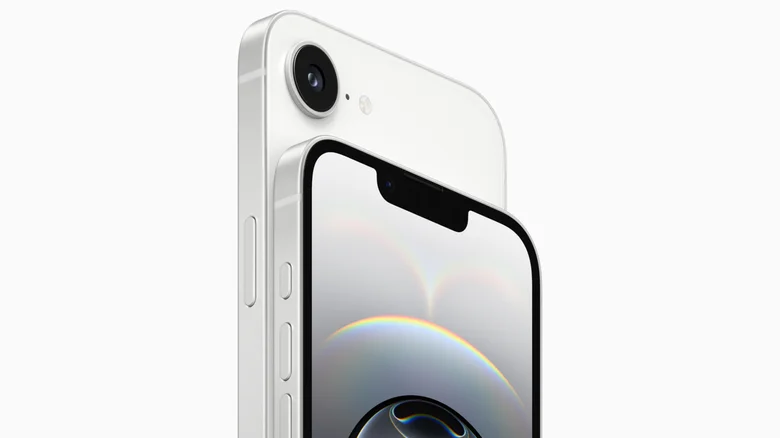6 OF THE BEST PHONES THE U.S. IS MISSING OUT ON

Americans are internationally known for a tendency to ignore much of what occurs beyond their borders, and that extends to technology. While many of the largest tech companies in the world are quartered here, there are plenty of exciting developments happening around the world. Smartphones are a prime example. Apple may have kicked off the mobile era with the original iPhone, but foreign companies are pushing forward with some of today's most exciting cell phone innovations. From blazing fast charging speeds to triple-folding phones, the United States is missing out on some of the coolest smartphones. There are a variety of reasons for that, which we'll cover briefly below, but it's safe to say the American smartphone market has limited options compared to elsewhere in the world.
Why are some phones hard to get in the United States?
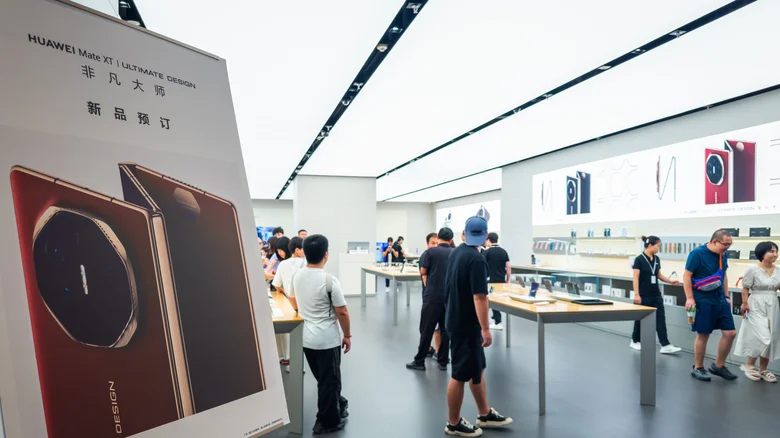
America's trade issues with China have been escalating. One effect of those tensions has been the increasing willingness of the U.S. to deploy isolationist trade policies like chip sales bans that have the effect of artificially insulating American companies from the burden of competition with Chinese firms. The stated rationale behind a number of these bans has been national security — most recently invoked to justify the law banning TikTok in lieu of a sale by its Chinese parent company. Whatever the merit of those concerns, one effect is fewer choices for American consumers. There are other reasons Americans are missing out on the coolest smartphones. For example, stores and carriers don't see a market for phones most people haven't heard of.
HUAWEI MATE X6

If you're a U.S.ww resident who wants a folding phone, your options will mostly be limited to Samsung, Google, Motorola, or OnePlus if you venture away from carrier shelves. But the Huawei Mate 6 gives those brands a run for their money with its incredibly thin form factor and high-end flagship specs. Unfolded, it clocks in at 4.6 mm thin, even slimmer than the remarkably thin M4 iPad Pro or Galaxy Z Fold6.
For software, the Mate X6 runs Huawei's custom version of Android, EMUI. Reviewers have praised its eye-candy design, great multitasking features, and more, but have noted its underpowered chip and difficulty running Google Play Services (another result of American restrictions). Due to the headaches, some reviewers have cautioned against buying it despite its otherwise lovely package.
XIAOMI 14 ULTRA

You can think of Xiaomi as a younger, hipper, Samsung. The company was founded in Beijing, China in 2010 and had garnered the lion's share of smartphone sales in China by 2014, surpassing even Samsung. This was achieved by continually putting out smartphones that won over consumers with features, performance, and bargain bin prices. The latest flagship phone from this upstart giant is the Xiaomi 14 Ultra.
Running on the Qualcomm Snapdragon 8 Gen 3 platform, which also powered the Samsung Galaxy S24 Ultra last year, the 14 Ultra is a phone that knows it has stiff competition. It one-ups even Samsung's brand-new S25 Ultra by including 16 GB of RAM, then piles on the pressure with a WQHD+, 6.73 inch, AMOLED, adaptive refresh rate panel that reaches 120 Hz using LTPO technology. The 14 Ultra's camera array, a massive, black obelisk that dominates the backside of the device, is a collaboration with renowned German camera company Leica. It consists of a 50-megapixel main camera with a 1-inch sensor, a 50-megapixel floating telephoto camera, a 50-megapixel, 120mm periscope camera, and a 50-megapixel, 12mm ultra-wide camera. Leica color science and special modes such as Supermoon (it takes pictures of the moon, unsurprisingly) round out the kit on the software side.
ONEPLUS 13

Chinese smartphone brand OnePlus started out in pursuit of what was often called the "flagship killer," a phone that could undercut on price and overdeliver compared to the most impressive offerings from more mainstream brands. And it delivered. It might be partially the fault of the OnePlus 13 that Samsung caught flak for its perceived lack of meaningful updates to this year's S25 Ultra. It has several futuristic features that aren't yet found in flagships from Apple, Google, or Samsung. Firstly, it uses a 6,000 mAh silicon carbon battery with up to 100-watt wired charging and 50-watt wireless charging, meaning its wireless charging is faster than Samsung or Apple's fastest wired charging. Second, it has a display that touts 4,500 nits of peak brightness, more than double the latest iPhone 16 Pro Max's peak and almost double that of the Galaxy S25 Ultra. It matches the latter device's processor — both use the blazing fast Qualcomm Snapdragon X Elite chip — and absolutely blows it away when it comes to memory with a whopping 24 GB of RAM compared to the S25 Ultra's 12 GB.
ZTE NUBIA Z70 ULTRA

ZTE was one of two companies directly hit with U.S. restrictions, along with Huawei. The resulting tête-à-tête has been a headache-inducing game of economic ping poing. Suffice to say the situationdd remains complicated and ZTE does not sell directly in the United States. To skirt the rules, ZTE spun off its Nubia brand as a subsidiary, so determined Americans can get their hands on the company's latest flagship, the ZTE nubia Z70 Ultra. Like other current generation import phones, specs are excellent on the Z70 Ultra. The latest Snapdragon X Elite chip powers the handset, backed up by up to a whopping 24 GB of RAM at a time when Samsung still sticks with 12 GB on the same processor and Apple is still content with 8 GB. The display is a 1216 x 2688 AMOLED, 144 Hz panel that measures 6.85 inches and reaches 2,000 nits of peak brightness. The triple camera array consists of a 50 megapixel wide main, 64 megapixel telephoto, and 50 megapixel ultrawide shooters. Impressively, the Z70 Ultra also has an IP69 water and dust resistance rating, meaning it can survive even very hot water jets, or movement underwater.
VIVO X200 PRO

Some phones on this list are easier to get in the United States than others, but Vivo hasn't properly launched a US variant of its latest flagship, the X200 Pro, as of this writing. However, reviewers who were able to get their hands on one have broadly praised the device for its excellent camera, durability, and design. That camera does indeed appear impressive, starting with the 200 megapixel periscope telephoto lens that can extend up to 3.7 times optical zoom for high resolution shots of far-off subjects. It's accompanied by two 50 megapixel wide and ultrawide shooters.
As for the platform, the Vivo X200 Pro packs a Mediatek Dimensity 9400 processor, a 3 nanometer process that competes against the latest Snapdragon X Elite chip from Qualcomm. It's accompanied by up to 16 gigabytes of RAM, which feels like a great time to remind you yet again that Samsung only stuck 12 gigabytes in the Galaxy S25 Ultra and Apple is resting on its laurels with 8 gigabytes in the iPhone 16 Pro Max. Another spec that blows them both away is the battery, which is a whopping 6,000 mAh on the global version. The X200 Pro also carries an IP69 water and dust resistance rating to protect it even from jets of hot water. Again, neither Apple nor Samsung have reached that level of protection on their flagships.
OPPO FIND N5

The parent brand to OnePlus, Oppo made waves with its upcoming Find N5 foldable phone by claiming the title of thinnest foldable yet. Indeed, renders displayed on Oppo's website show that the device is barely thinner than its USB-C port when unfolded. Unfortunately, getting your hands on one in the United States after it launches on February 20th will prove difficult. Oppo has no retail partners stateside, so you'll have to hunt around online. What we know about this device ahead of its launch is that its camera system was created in partnership with Hasselblad (the same collaboration that goes into the cameras on OnePlus devices). It will be composed of two 50 megapixel wide and periscope telephoto shooters, along with a head-scratchingly low-resolution 8 megapixel ultrawide. It will run on the blazing fast Qualcomm Snapdragon X Elite chip, the cream of the current Android crop, which will be accompanied by 16 gigabytes of RAM. Like other Chinese market phones this cycle, it will have IP69 water and dust resistance, able to withstand hot jets of water in a world where Samsung is still squeaking by with a paltry IP 48 on its latest Galaxy Z Fold6. It's actually hard to overstate how impressive this level of protection from the elements is on a foldable device, especially given its thinness.
THE IPHONE 16E CONNECTIVITY UPGRADES THAT MIGHT MAKE IPHONE SE OWNERS TRADE-IN
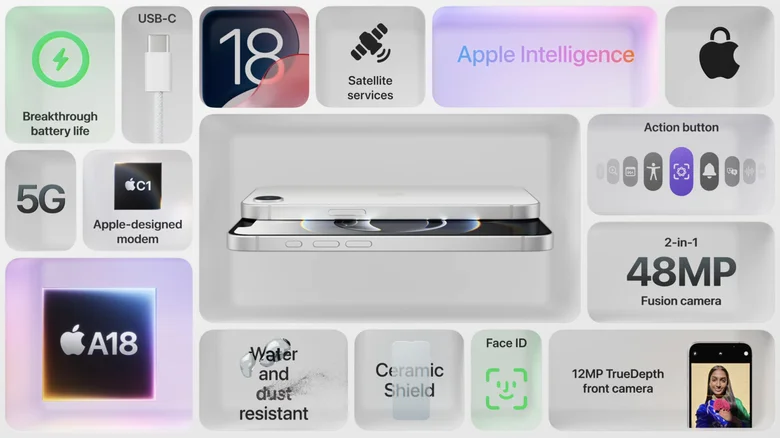
Nearly a week ago, Apple CEO Tim Cook took to X (formerly Twitter) to tease an Apple product launch scheduled for today, February 19, 2025. As expected, the "newest member of the family" turned out to be Apple's new budget-friendly offering — with a caveat. What was expected to be the next iteration of the iPhone SE series instead arrived as the iPhone 16e, marking the start of a new product line and signaling the end of the iPhone SE era. Starting at $599 for the 128GB model, the budget-friendly, yet premium device is $200 cheaper than Apple's current flagship base model iPhone 16. Interestingly, its predecessor started at $429, making the iPhone 16e $170 more expensive. Given the big shift up, it raises an important question — does the higher price tag justify iPhone SE owners trading in for the 16e? The short answer is yes. The iPhone 16e features the same A18 chipset as Apple's current flagship models. According to Apple, the 6-core A18 processor is 80% faster than the A13 chip found in the iPhone 11 series. Not only does the more powerful processor ensure a smoother everyday experience, but it also means users can finally enjoy all the features Apple Intelligence has to offer without breaking the bank.
The iPhone 16e features the C1, Apple's first modem
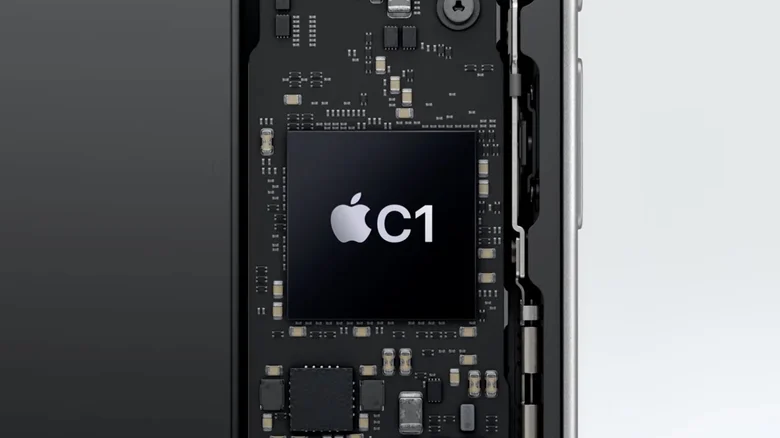
If you've been in the Apple world for a long time, you've likely heard rumors of Apple's efforts to develop its own modem. The company has relied on Qualcomm for its 5G modems, but the relationship has been rocky. So much so, that the two companies were engaged in a legal battle over unfair business practices. Eventually, the two corporations settled, with Apple agreeing to a six-year license degree, effective from 2019. In 2023, just before the iPhone 15 launch, Apple extended its deal with Qualcomm, after reports surfaced about the company struggling with its in-house modem design. After years of leaks and speculation, the iPhone 16e is the first to feature Apple's in-house C1 modem. According to Apple, the C1 is the most power-efficient modem ever in an iPhone. The company also credits the C1, the iPhone 16e's redesigned internals, and the advanced power management of iOS 18 for delivering "extraordinary" battery life. Apple claims the iPhone 16e delivers the best battery life ever seen on a 6.1-inch iPhone, with up to 26 hours of video playback, which is 12 hours longer than previous iPhone SE models. The iPhone 16 and 16 Pro continue to use Qualcomm's chips, but the inclusion of the C1 modem in the iPhone 16e suggests that Apple is gradually transitioning toward its own modem technology and breaking free from Qualcomm. The iPhone 16e comes in matte black and white, and will be available for preorder on Apple's website starting Friday, February 21.
THE IPHONE SE IS DEAD: SAY HELLO TO THE NEW IPHONE 16E
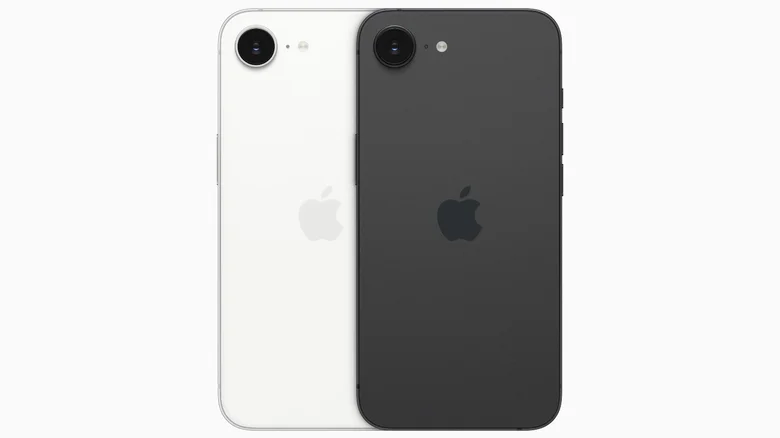
In a surprise mid-February reveal, Apple launched its latest smartphone, the iPhone 16e, today. iPhones have a reputation as premium devices, but for those on a tighter budget, Apple occasionally releases a more modest phone — in recent years, the SE line — that won't break the bank. As expected, the new iPhone 16e makes some strategic downgrades compared to the regular iPhone 16 lineup in order to keep the price comparatively low while still providing customers with the iPhone experience — you may only get one camera on the back, but you also get a comfortable $599 price tag. The iPhone 16e appears to mark the end of the line for the SE models, the latest of which was released back in 2022 — meaning this new offering is a significant upgrade for anyone who wants a cheap iPhone but can't bear the previous iPhone SE's lackluster specs. Apple has done a lot to modernize its budget-friendly model, completely changing the design of the device away from that of the SE, giving it a bigger, better screen, a modern processor, and even updating connection standards to keep it future-proof. Here's everything you need to know about the brand new iPhone 16e.
iPhone 16e brings USB-C and ditches the home button at last
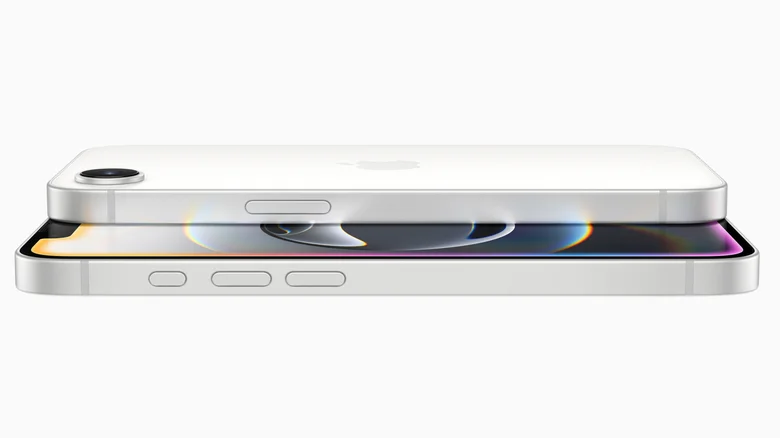
The iPhone 16e, as you'd expect given its name, shares the same general aesthetic as the regular iPhone 16 lineup, with the first and most immediate deviation being the single camera lens on the back. Despite that, Apple's latest budget handset brings many modern features to the table, including a charging connector switch from Lightning to USB-C, access to the company's Apple Intelligence features, the Action button that recently replaced the switch, and support for recording videos at up to 4K / 60 fps with Dolby Vision. Buyers will get access to the A18 chip, with 4 GPU cores, 6 CPU cores, and 16 Neural Engine cores. Apple claims the model's hardware can handle "graphically demanding AAA titles" for mobile gaming, ultimately giving users up to 80% faster CPU performance when compared with the iPhone 11's A13 Bionic. The hardware is also sufficient for powering certain ML algorithms that, among other things, will work to cut down on unwanted noise when recording videos. Siri, meanwhile, provides users with access to ChatGPT as part of the overall Apple Intelligence package, plus there's access to Apple's relatively new Image Playground AI image generator app and Writing Tools.
The iPhone 16e brings a major hardware 'first' for Apple
